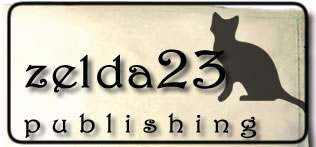Fonts and Styles
- Navigate to:
- Word Basics
- Fonts and Styles
- Basic Text Formatting
- Clipart
- Tables
- Columns
- Headers and Footers
- Using Mail/Data Merge
- Video: Mail Merge on the Macintosh
- Video: Mail Merge in Windows
- Reviewing and Editing Documents
When creating a document, the characters you type on the screen do not all have to look alike. Depending on your individual computer's configuration, you may have many different fonts installed. Some may have similar names, such as Times and Times New Roman, and may look similar to each other as well. These fonts belong to the same typeface family.
Fonts and typefaces fall into three basic categories:
- Serif: Serif
fonts are characterized by the little "tails," or
serifs, on each letter. Examples of serif fonts include
Times New Roman, Palatino, and Georgia.
- Sans-Serif: The
word sans in French means "without," so
a sans-serif font does not have serifs on each letter. Examples of
sans-serif fonts include Arial, Helvetica, and Verdana.
- Decorative: These fonts are usually very opulent, such as a font that mimics script or calligraphy. Other decorative fonts are used mainly for "fun" and may contain symbols or small images instead of alphabetic letters. Decorative fonts should not be used as the main text of a document, as they are usually very hard to read. These typefaces are best suited to titles or to add visual interest to a flyer, newsletter, or other word-processed creation. Examples of decorative fonts include BrushScript, MarkerFelt, and Wingdings.
Word, like many programs, allows you to type in any of the fonts installed on your computer, and it also allows you to change the style of the font. Style changes enhance the look of the font, but do not change it to a completely different font. Style changes can also be compounded, so that you can have a piece of text become red, bold, italicized, and at a particular size all at the same time.
In Microsoft Word, you may use several different methods to see and change between the fonts installed on your computer. Use the method that works best for you.
Format Menu
1. Click the Format menu at the top of your screen , then click Font.

2. A new window will appear. Available here is a list of all of your fonts, the ability to add and remove styles by clicking the appropriate checkboxes, and a preview of what your font and style combination will look like.

3. When you click OK, anything you type in your Word document will be displayed in the font you chose until you choose another.

Formatting Toolbar/Ribbon
1. The Formatting Toolbar, or "Ribbon," is available under the View menu if it is not already visible, along with other Word toolbars (see Microsoft Word Basics for more information on toolbars).

2. The Formatting Toolbar contains shortcuts to changing the font, size, style, and color of any text in your document (note that not all styles are available in the toolbar, however). For example, the toolbar shown below contains settings for Times at 12-point, without bold, italic, or underline. Clicking on the third-to-last tool (at the far right of the toolbar) will allow the user to add a border around the text. Clicking the second-to-last tool will add a colorful highlight to the text. And finally, the final tool will change the color of the type. (Please note that the other tools in this toolbar are covered under the section, Basic Text Formatting).
![]()
3. You may simply choose your font and style combination, then type your text, or you may click and drag over (select) existing text before making your change, as shown below.
 can
change to
can
change to 
